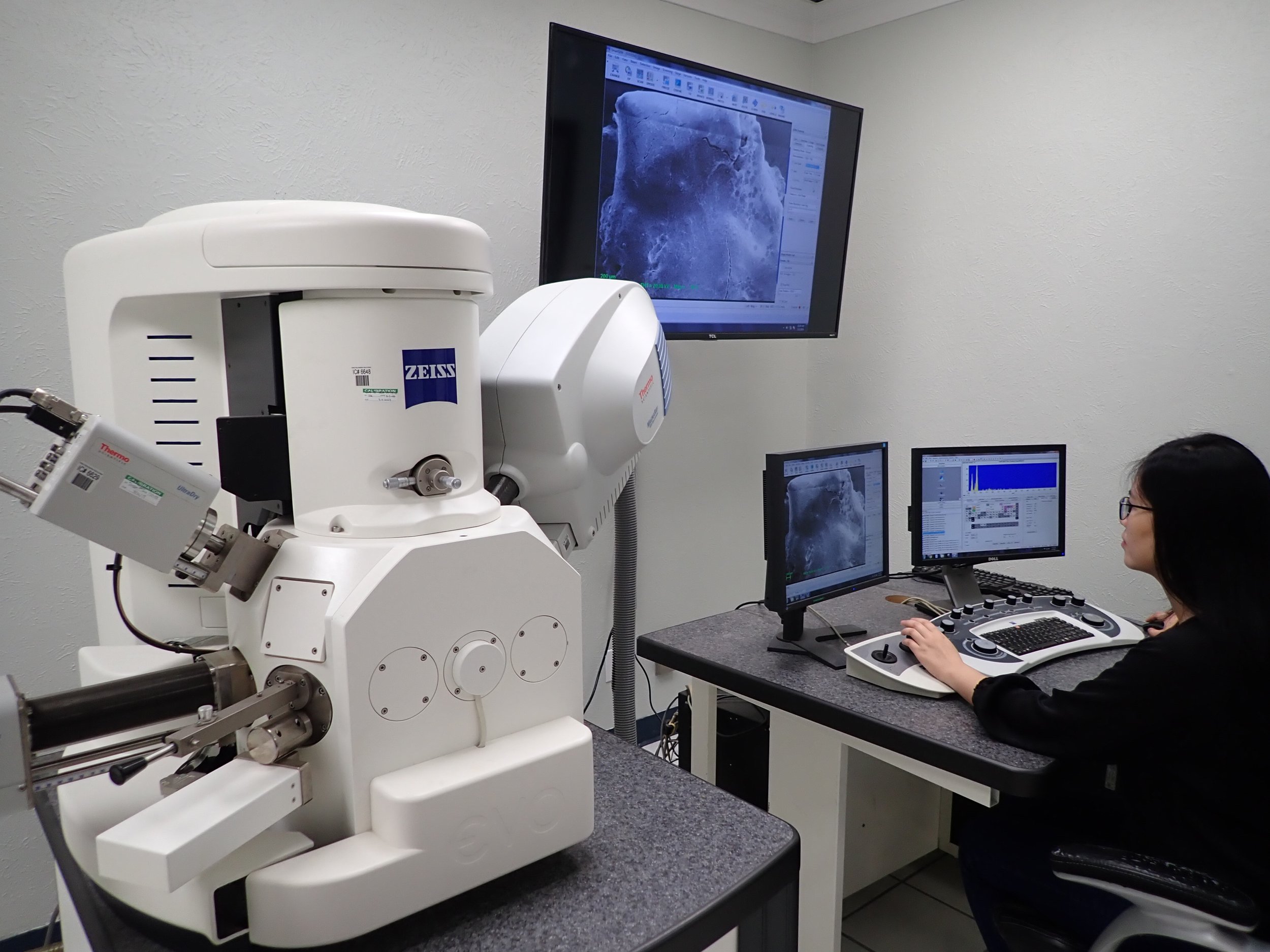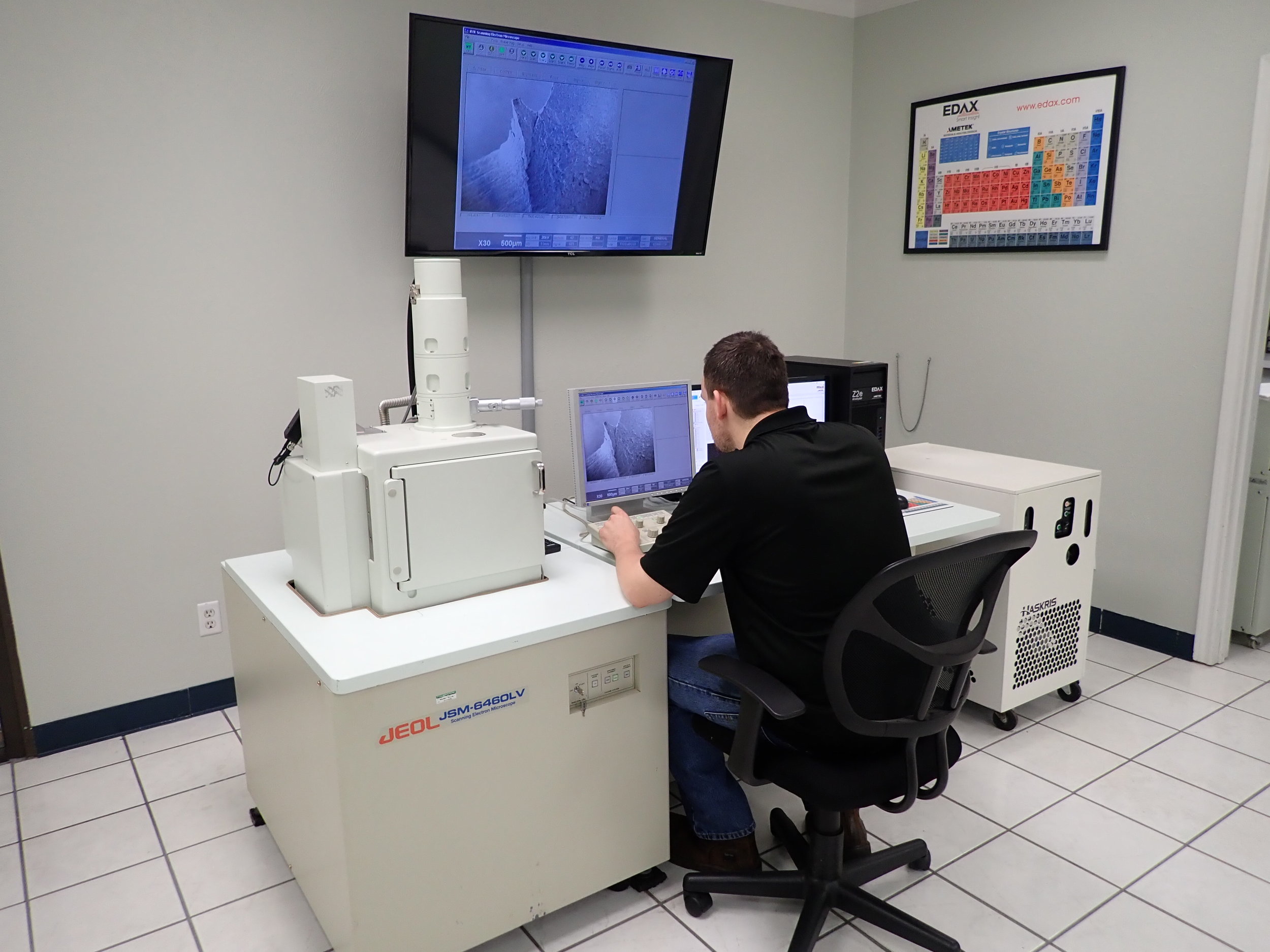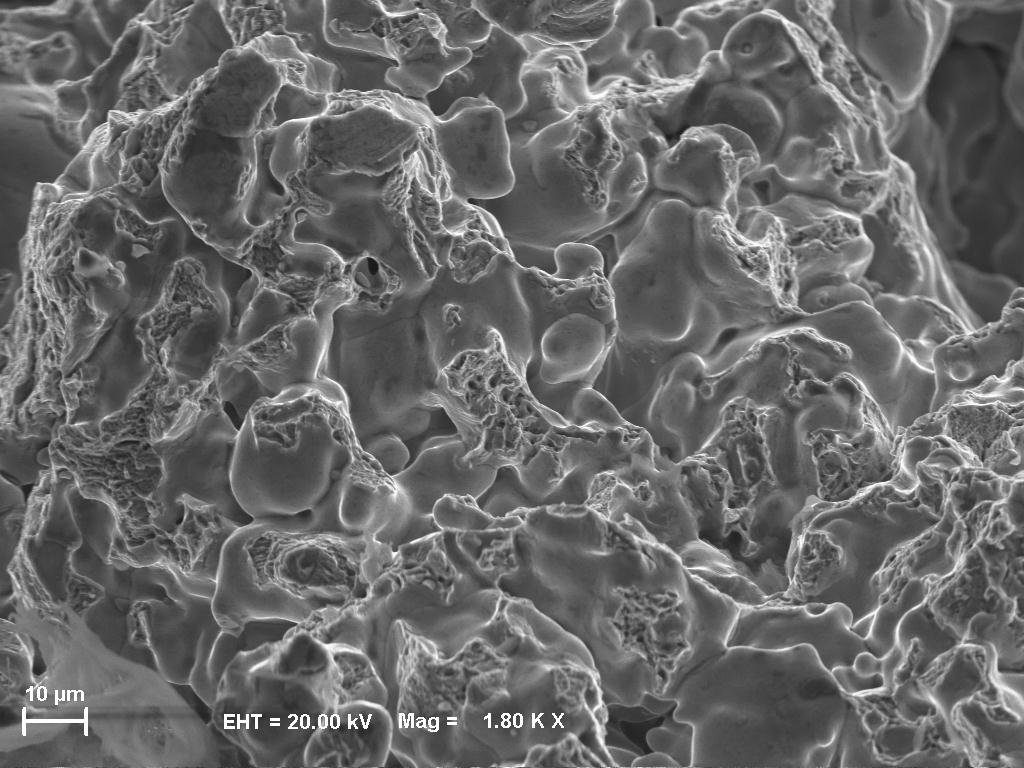scanning electron microscopy
SEM ANALYSIS WITH EDS 功能
Scanning Electron Microscopy (SEM) is a powerful tool that scans a sample with an electron beam to produce a magnified image for analysis. The highly magnified images provide a powerful and effective micro analysis technique tool in failure analysis, 量纲分析, 污染物分析, 粒子分析, 逆向工程. Images produced by a fracture surface are often used to determine the mode and mechanism of failure.
现代扫描电镜设备
Our surface analysis lab in the Dallas, TX metroplex provides top tier scanning electron microscope services, utilizing Zeiss and Jeol SEMs that include EDAX and Thermo Energy Dispersive X-ray Spectroscopy (EDS) capabilities for chemical composition.
The SEM analysis lab will allow you to view surface features at 5 to 300,000X magnification to provide you with high quality, 景深图像. When used with EDS detectors attached to each SEM, the chemical composition of surface features is quickly attained. While often used for metals and minerals, the MES beam lab includes a variable pressure system capable of analyzing non-conductive samples (such as polymers) with minimal preparation.
扫描电镜分析报告
Upon completion of your metals testing or analysis, a comprehensive report will be provided with EDS test data, 高倍率图像, referenced test specification, and interpretation from a materials engineer.
THE SEM ANALYSIS ADVANTAGE
Scanning Electron Microscopy (SEM) is an essential tool in failure analysis, helping engineers and scientists investigate and understand the reasons behind the failure of materials and components.
Here's how SEM is used in failure analysis:
Detailed Surface Imaging: SEM provides highly detailed images of the failed material's surface, allowing analysts to examine the fracture surface, 裂缝, 腐蚀, or any other visible damage. The high magnification and resolution of SEM help reveal the morphology and topography of the failure features.
Microstructural Analysis: SEM enables the examination of the microstructure of the material. By preparing the sample appropriately, such as through polishing and etching, analysts can study the grain structure, 相位分布, and any microstructural abnormalities that might contribute to the failure.
Elemental Composition Analysis: SEM can perform energy-dispersive X-ray spectroscopy (EDS) or X-ray microanalysis, which helps identify and quantify the elemental composition of the failed material. This analysis can reveal the presence of impurities, 污染物, or variations in alloy composition that might have played a role in the failure.
Fracture Surface Analysis: SEM allows investigators to analyze the fracture surfaces of failed components. By examining the fracture mode, 裂纹扩展模式, and the presence of specific features like 乏力 striations or ductile tearing, analysts can determine the failure mechanism and understand if it was due to overload, 乏力, 或者其他因素.
Corrosion Analysis: In cases of 腐蚀-related failures, SEM can provide valuable information about the 腐蚀 products, 腐蚀形态, and the extent of 腐蚀 damage. This helps identify the corrosive agents, assess the 腐蚀 mechanisms, and guide preventive measures.
Foreign Object Analysis: Sometimes, the presence of foreign objects can lead to component failure. SEM enables the examination and identification of foreign particles or 污染物 on the surface or within the material, providing insights into their origin and potential impact on the failure.
By utilizing SEM in failure analysis, engineers and scientists can gain a deeper understanding of the underlying causes of failures, aiding in the improvement of materials, 设计, 生产流程, and preventive measures to avoid future failures. Our superior instrumentation allows us to provide exemplary service at very competitive prices.
功能
High Magnification Imaging – up to 300,000x
Examination of fractured surfaces
Semi-quantitative chemical analysis by EDS
Evaluation of crystallographic orientation
Low cost chemical and contaminant identification
Analysis of metals, polymers, and minerals
规范
ASTM B748 - Metallic Coating Thickness Measurements
ASTM E1508 - EDS分析
样品需求
样品尺寸-高达8英寸. 直径和3英寸. 在高度上




